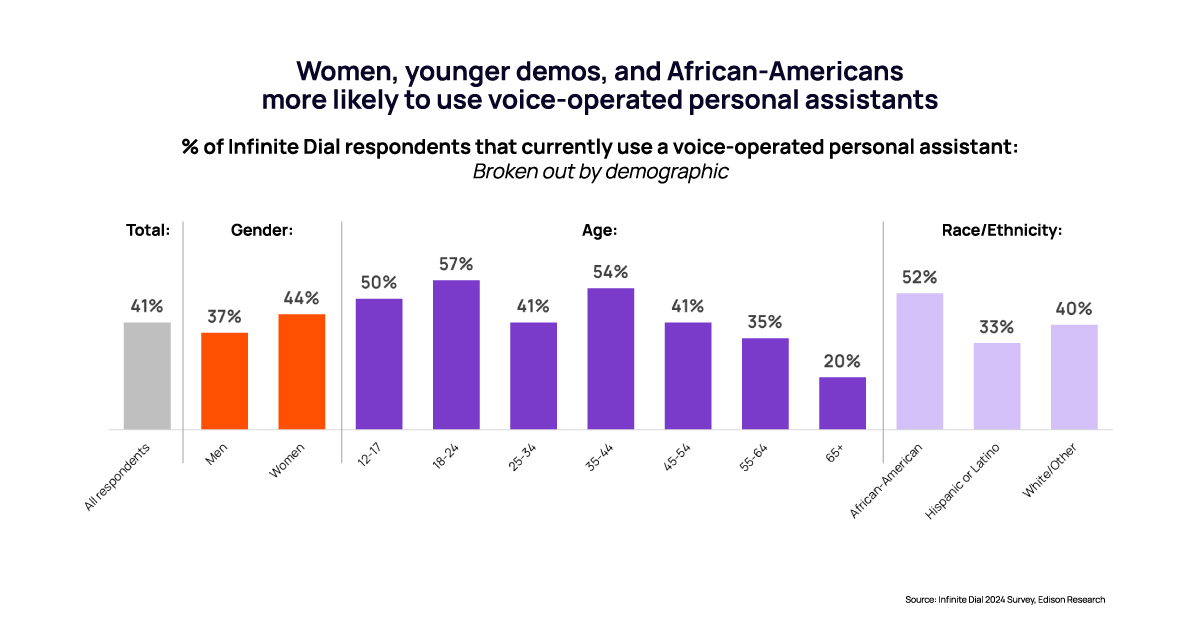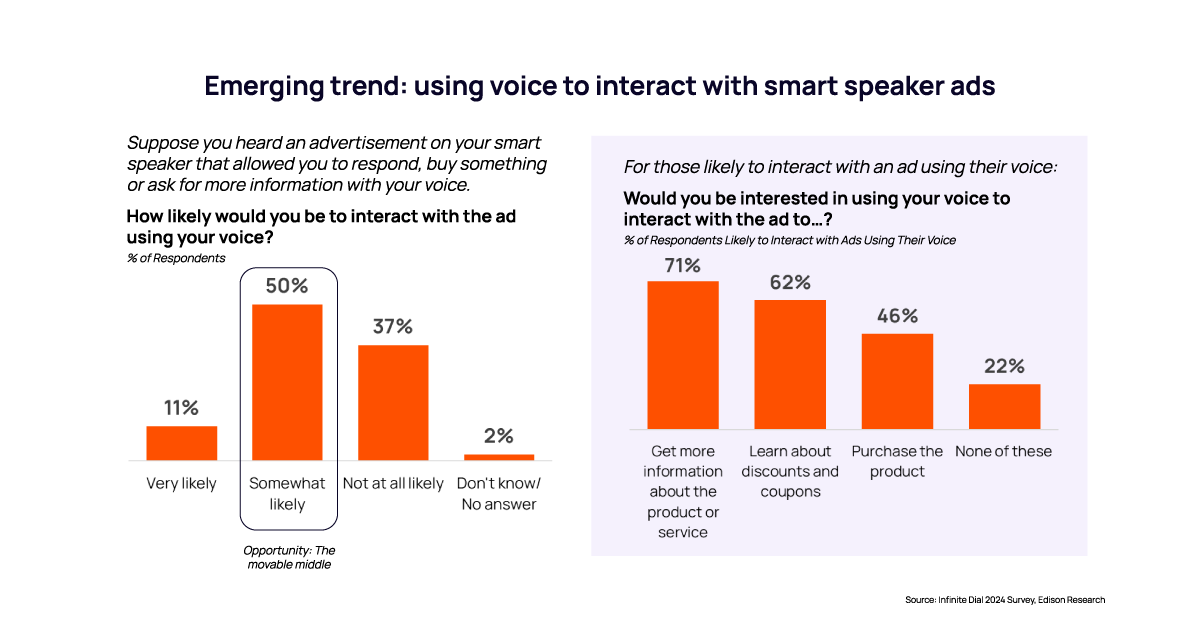Audiences Use Their Voice: Valuable Shoppers are Connecting with Brands on Smart Speakers
Voice advertising is a growing media trend, broadly referring to ads delivered through voice-enabled platforms such as smart speakers, virtual assistants, and Audio streaming services. The B2B community is taking note and placing its bets on smart speakers and devices. Ad Perceptions’ H2 2023 Advertiser Perceptions Study underscored optimism in Audio advertising spend. Agencies and advertisers were most likely to point to smarts speakers and devices as areas of growth in their Audio investments, with 62% expecting an increase of spend on these platforms. An additional 36% indicated they were keeping their investments steady on smart speakers, rounding out the vote of approval.
The business community is responding to consumers’ increasing adoption of voice-enabled devices and platforms. Audacy first detected a signal for increased adoption of ‘voice’ motivation to choose content and to interact with ads in its ongoing Connected Car studies. In our latest study (Q4, 2023) voice-activation led the drivers’ wish list for their next Connected Car, with 45% indicating they would like to speak to the dashboard while driving. And that was ahead of those who still would like to rely on their phone (39%).
And now the Infinite Dial (2024) survey paints a picture of those who are most likely to be at the forefront of voice-driven Audio content and advertising. Those who use voice-operated personal assistants today are young, diverse and more likely to be female.

Voice-driven content and advertising offers a unique opportunity for businesses to engage with their target audience in a more personal and interactive way. Advertisers that tap into voice technology can deliver customized messages, provide product recommendations, and even enable voice-based transactions. There is an opportunity: 61% of audiences say they would be likely to interact with ads using their own voice. Among them a sizable group (50%) make up the ‘movable middle’ as they express they are somewhat likely to interact with ads with their voice. They could be convinced to interact with brands in the right context, through the right creative strategies and compelling offers.
Suppose you heard an advertisement on your smart speaker that allowed you to respond, buy something or ask for more information with your voice.

Among those likely to use voice to interact with ads, most would likely to get additional information (71%) or learn about deals (62%). Almost half (46%) of those interested in voice-based interactions would go ahead and complete a purchase.
And who are the voice shoppers of today? They are high-income suburbanites with smart speakers at their homes. They are almost universally streaming audio, with more than half listening to podcasts weekly. Women tend to be the more cautious, but smart shoppers: Among those interested in voice ads, information- and deal-seekers (59%) skew female, men (53%) are slightly more likely to purchase with voice.

Where is the opportunity today? While voice-driven shoppers are still a niche group, they signal opportunities for podcast and Connected Car advertisers, with 7 in 10 listening to podcasts weekly, and nearly half (48%) using Apple Carplay.
Like other early adopter groups, those consumers who interact with content and advertising using voice technologies, are high spenders who are open to innovation. They are holding the door open to brands who want to connect with shoppers through personalized and immersive experiences.
